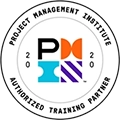Create a Business Analysis Center of Excellence
By Dr. Martin Schedlbauer, CBAP, OCUP
Projects rarely fail for lack of technology. More often, they falter because requirements were misunderstood, undocumented, or interpreted inconsistently across teams. In organizations where project success depends on clarity, collaboration, and measurable outcomes, business analysis excellence becomes a strategic necessity rather than an operational luxury.
A Business Analysis Center of Excellence (BACoE)—sometimes called a Competency Development Center—is a formal structure that ensures business analysis is performed consistently, expertly, and in alignment with organizational goals. Rather than allowing every analyst to work independently with their own tools and formats, a BACoE provides standards, governance, training, and support that elevate the entire discipline across the enterprise.
Why Establish a BACoE?
Without structure, business analysis efforts tend to be fragmented. One analyst may capture requirements using process models, while another relies solely on narratives or spreadsheets. Terminology differs from project to project. Templates vary widely. Even the definition of “done” can become subjective. This inconsistency creates risk, leading to delays, rework, and misaligned expectations.
A BACoE addresses that fragmentation by defining how business analysis should be executed—not to limit flexibility, but to reduce ambiguity. Establishing standard artifacts, deliverable expectations, and review criteria enables teams to collaborate more fluidly and onboard faster. It also strengthens communication with stakeholders, who can expect the same structure and rigor regardless of which analyst is assigned.
Core Functions of a Business Analysis Center of Excellence
A well-designed BACoE generally serves five major purposes. While some organizations start with a lightweight, virtual model and mature over time, the intent remains the same: to increase capability, consistency, and strategic alignment.
Standardizing Deliverables
 One of the most critical responsibilities of a BACoE is ensuring that key outputs—such as use cases, data models, business rules, decision tables, and process flows—follow a predictable format. Templates, examples, and review guidelines help analysts produce documentation that is both clear and reusable. Rather than rewriting artifacts from scratch for every initiative, analysts can work within familiar structures, improving both speed and quality.
One of the most critical responsibilities of a BACoE is ensuring that key outputs—such as use cases, data models, business rules, decision tables, and process flows—follow a predictable format. Templates, examples, and review guidelines help analysts produce documentation that is both clear and reusable. Rather than rewriting artifacts from scratch for every initiative, analysts can work within familiar structures, improving both speed and quality.
Defining and Governing Methodology
Many organizations informally reference industry frameworks like IIBA’s BABOK®, but stop short of translating them into an actionable internal methodology. A strong BACoE bridges that gap by tailoring best practices to the company’s specific environment. It clarifies phases, handoffs, and terminology so that both analysts and their stakeholders understand what is expected at each stage of analysis. Once defined, the methodology must be actively maintained and reinforced through ongoing communication, reference materials, and training.
Providing Tactical Support
A BACoE is not just an administrative function—it is often a hands-on resource. Experienced analysts within the center may serve as project coaches, mentors, or even fractional contributors who assist during complex or high-risk initiatives. This support helps newer analysts grow while ensuring that project teams never feel abandoned when facing challenging requirements situations.
Developing Skills and Competencies
Business analysis is a profession that relies not just on tools, but on strategic thinking, curiosity, facilitation, and diplomacy. To sustain excellence, a BACoE typically maintains a competency model that outlines expected skills at various levels. Learning paths, mentoring programs, and internal communities—such as discussion forums or “BA roundtables”—create an environment where analysts can continuously improve, rather than plateau.
Maintaining Tools and Repositories
Standards are only effective when easy to access. A BACoE curates a library of templates, examples, and reusable artifacts as well as approved tools for modeling and documentation. Whether housed in a SharePoint site, Confluence wiki, or centralized requirements management platform, the goal is to provide a single source of truth where analysts know they will find the most current and accurate resources.
How to Build a Business Analysis Center of Excellence
Creating a BACoE does not require a massive launch. In fact, many successful centers begin informally, often with a single leader or small team who takes ownership of standardizing practices. The key steps typically include:
 Begin with a maturity assessment. Interview stakeholders, survey analysts, and review existing artifacts to understand how business analysis is currently being performed. Identify where inconsistencies are impacting project success. Then define what “good” should look like. This does not need to be a complex framework—simply describing the behaviors, deliverables, and capabilities you want to see in the future state will help clarify direction.
Begin with a maturity assessment. Interview stakeholders, survey analysts, and review existing artifacts to understand how business analysis is currently being performed. Identify where inconsistencies are impacting project success. Then define what “good” should look like. This does not need to be a complex framework—simply describing the behaviors, deliverables, and capabilities you want to see in the future state will help clarify direction.
From there, conduct a gap analysis to determine what changes are needed. In some cases, analysts may require training in modeling techniques or elicitation skills. In others, the issue may be environment-related—no agreed-upon templates, no central repository, no governance process.
Once gaps are identified, begin implementing solutions incrementally. Introduce a core set of templates. Establish review checkpoints. Pilot mentorship roles. Most importantly, communicate consistently. A BACoE will not succeed if analysts perceive it as bureaucracy. It must be positioned as an enabler—one that helps analysts do better work with less frustration.
Over time, formalize the structure. Define roles within the BACoE, clarify escalation paths, and align the group with project management, architecture, and quality assurance functions. As credibility grows, so does influence.

Figure 1. Process for Formation of a BACoE
Measuring Success
A BACoE should not exist merely as documentation. Its impact should be observable in measurable outcomes: fewer requirements-related change requests, faster project initiation, higher stakeholder satisfaction, improved analyst retention. Conduct periodic retrospectives, surveys, and structured feedback loops to ensure that standards remain useful rather than theoretical.
Final Thought
Establishing a Business Analysis Center of Excellence is ultimately about institutionalizing clarity. It ensures that business analysis is not dependent on individual heroics, but rather supported by shared practices, shared language, and shared accountability. Whether implemented as a virtual team or a fully staffed function, a BACoE is one of the most effective ways to mature business analysis from an individual contributor role into a scalable organizational capability.
About the Author
Dr. Martin Schedlbauer, consultant and instructor for the Corporate Education Group, is an accomplished business analysis subject matter expert, and has been leading and authoring seminars and workshops in business analysis, software engineering, and project management for over twenty years. Beyond that, he is involved in architecting large-scale distributed software systems for many of his clients.
Business Analysis
For more information on this topic, as well as how Corporate Education Group can help power your organization’s performance, contact us via email or call 1.800.288.7246 (US only) or +1.978.649.8200. You can also use our Information Request Form!


